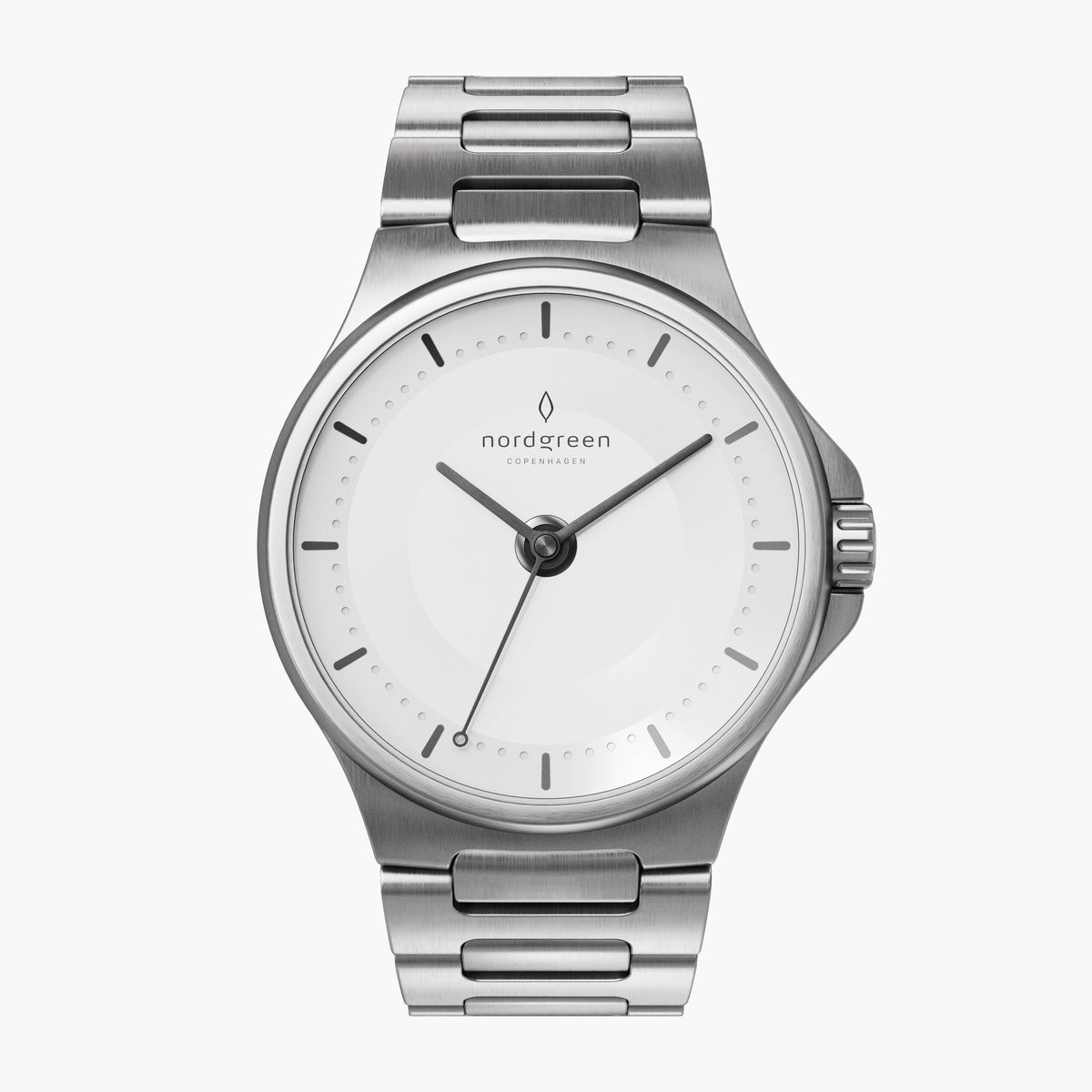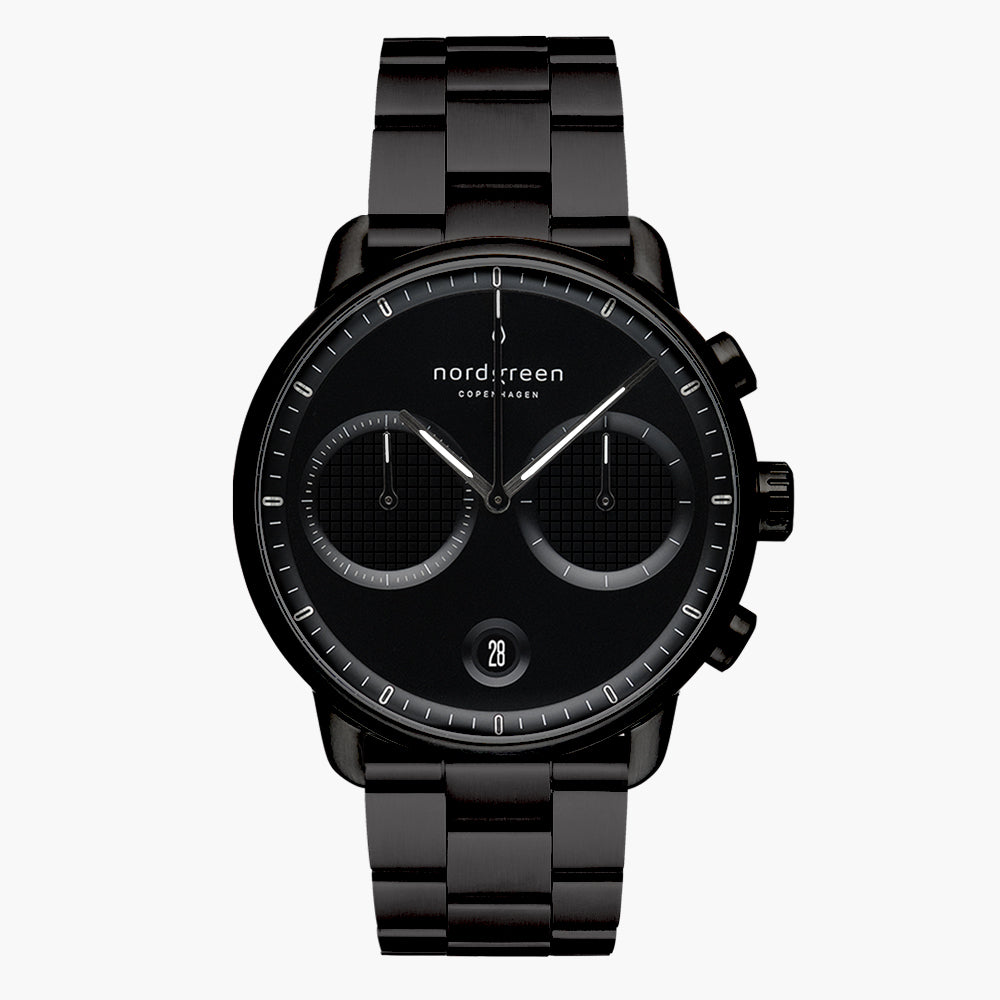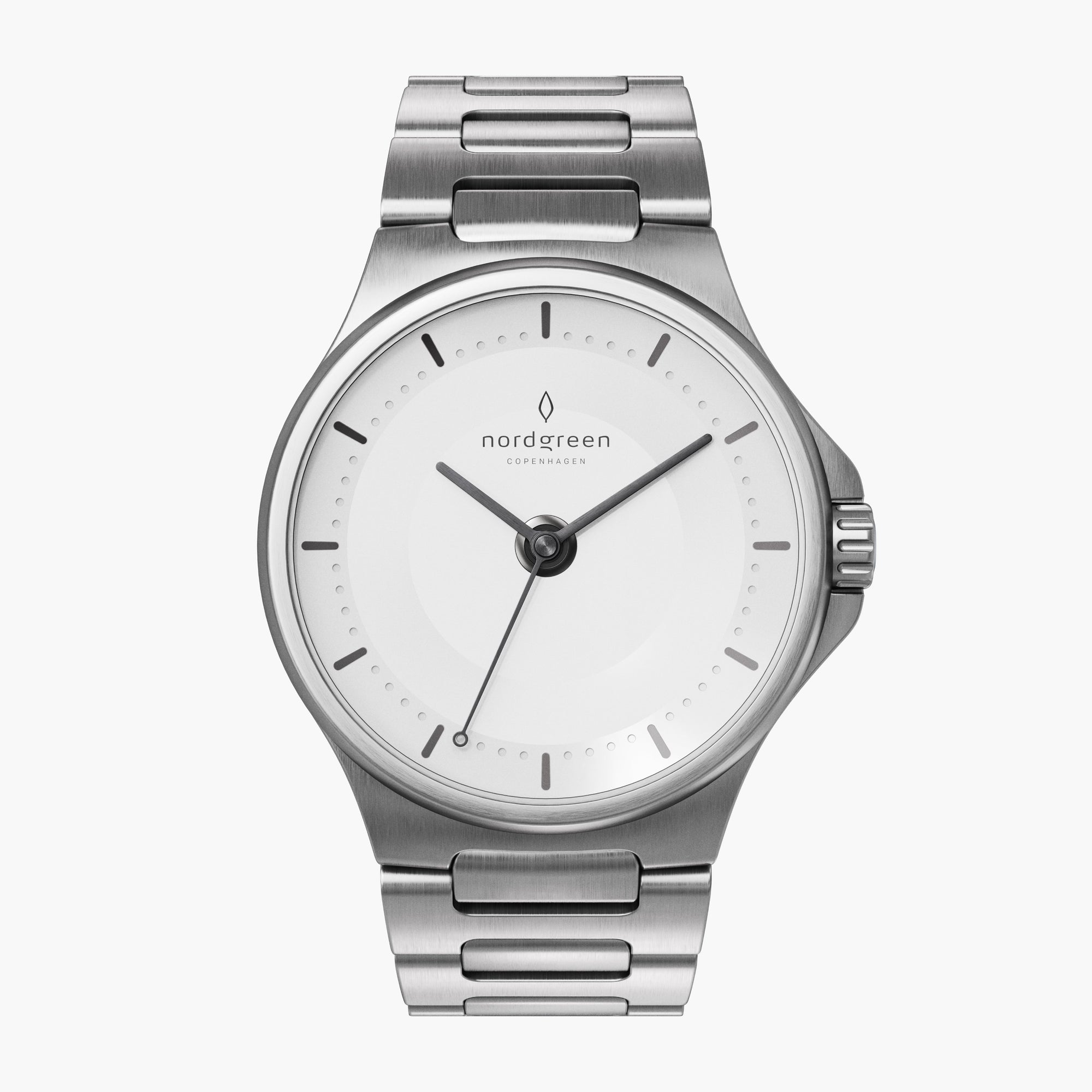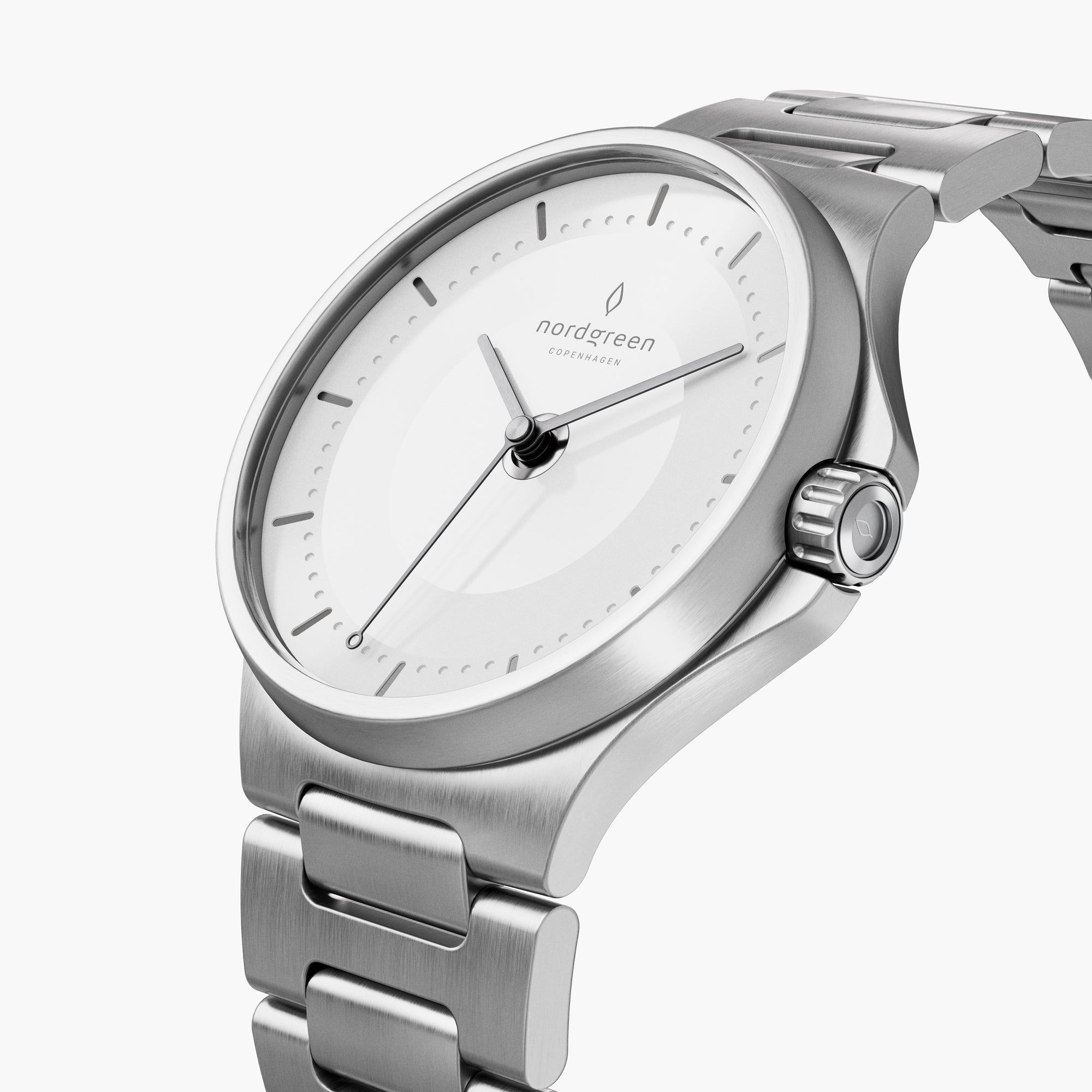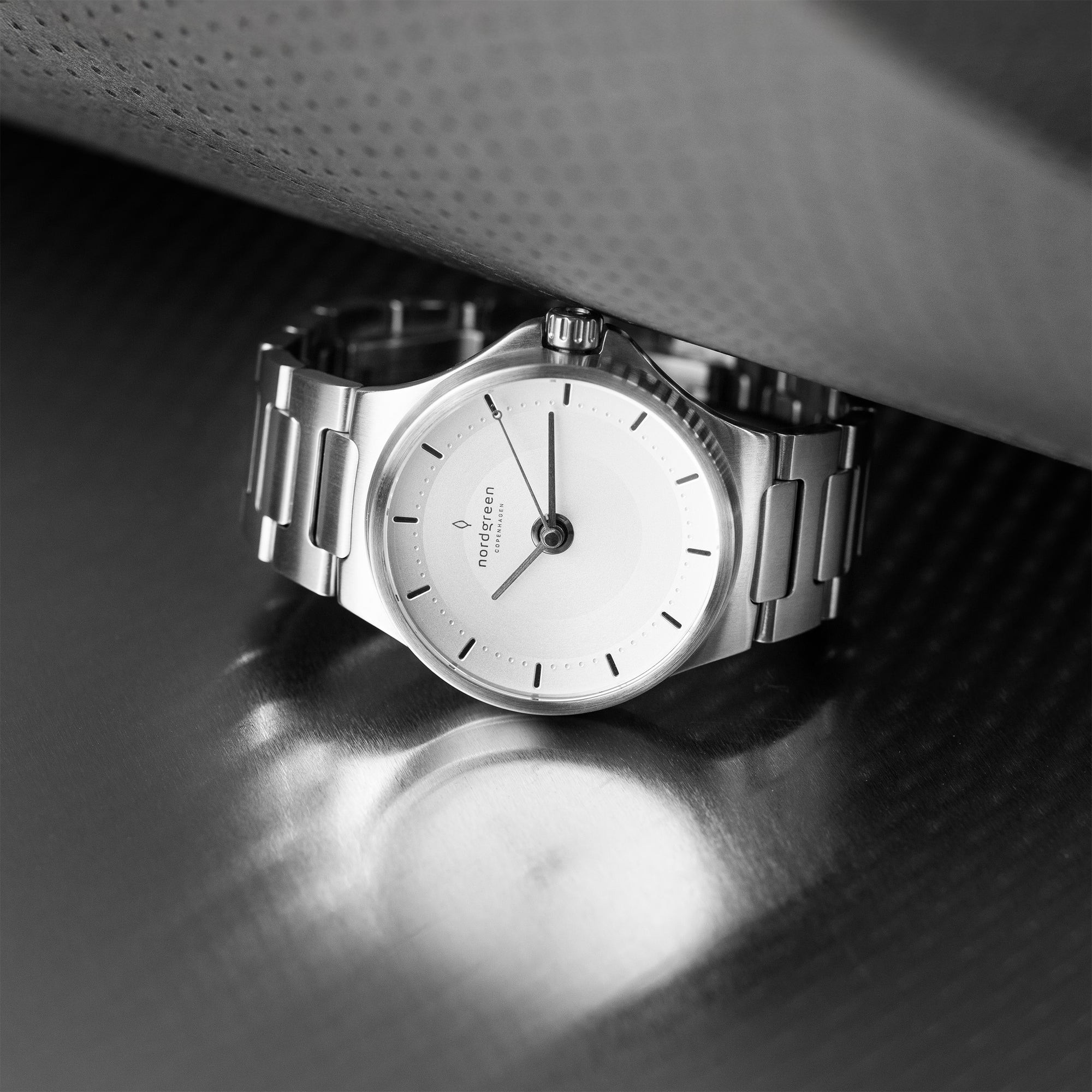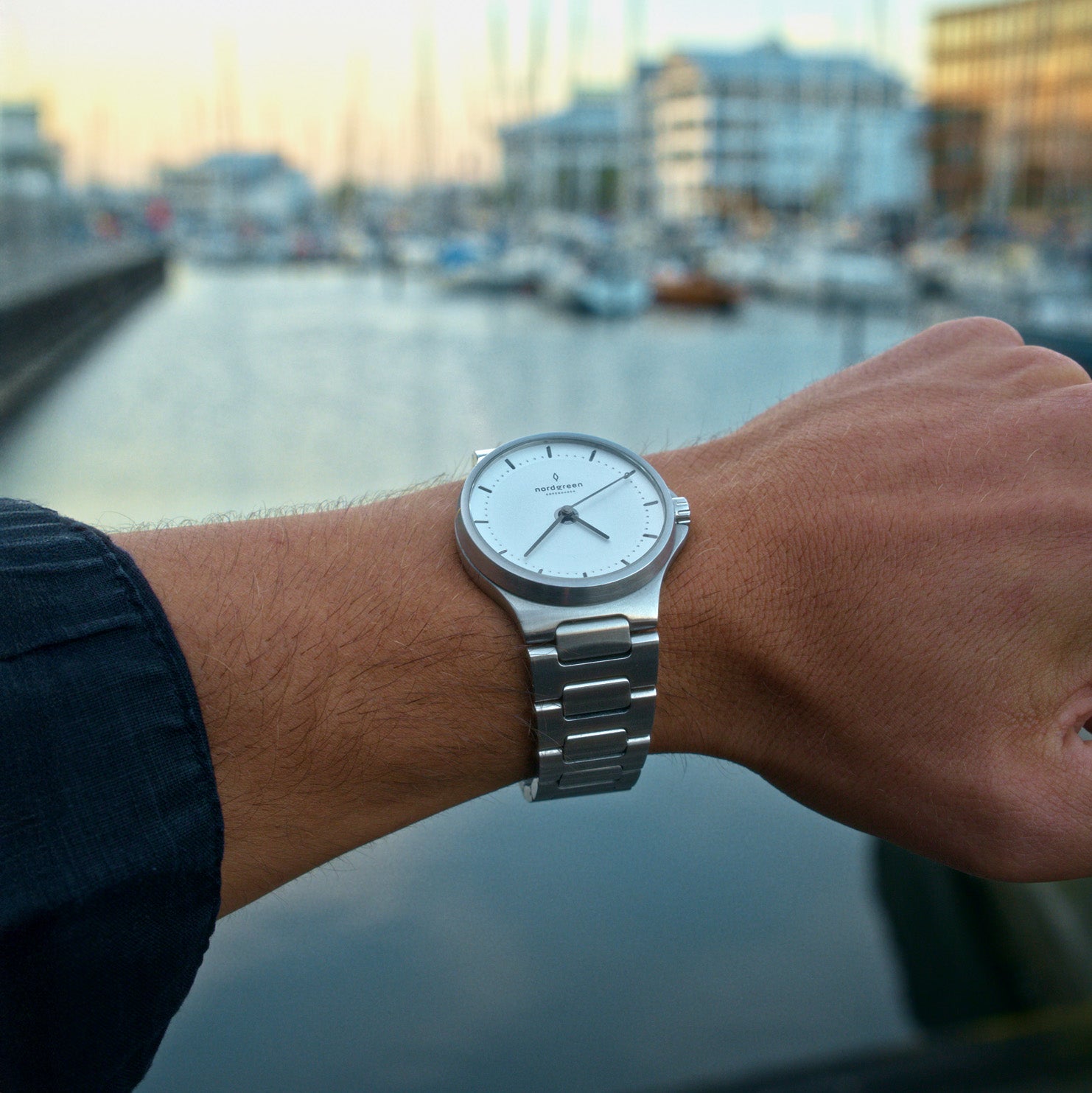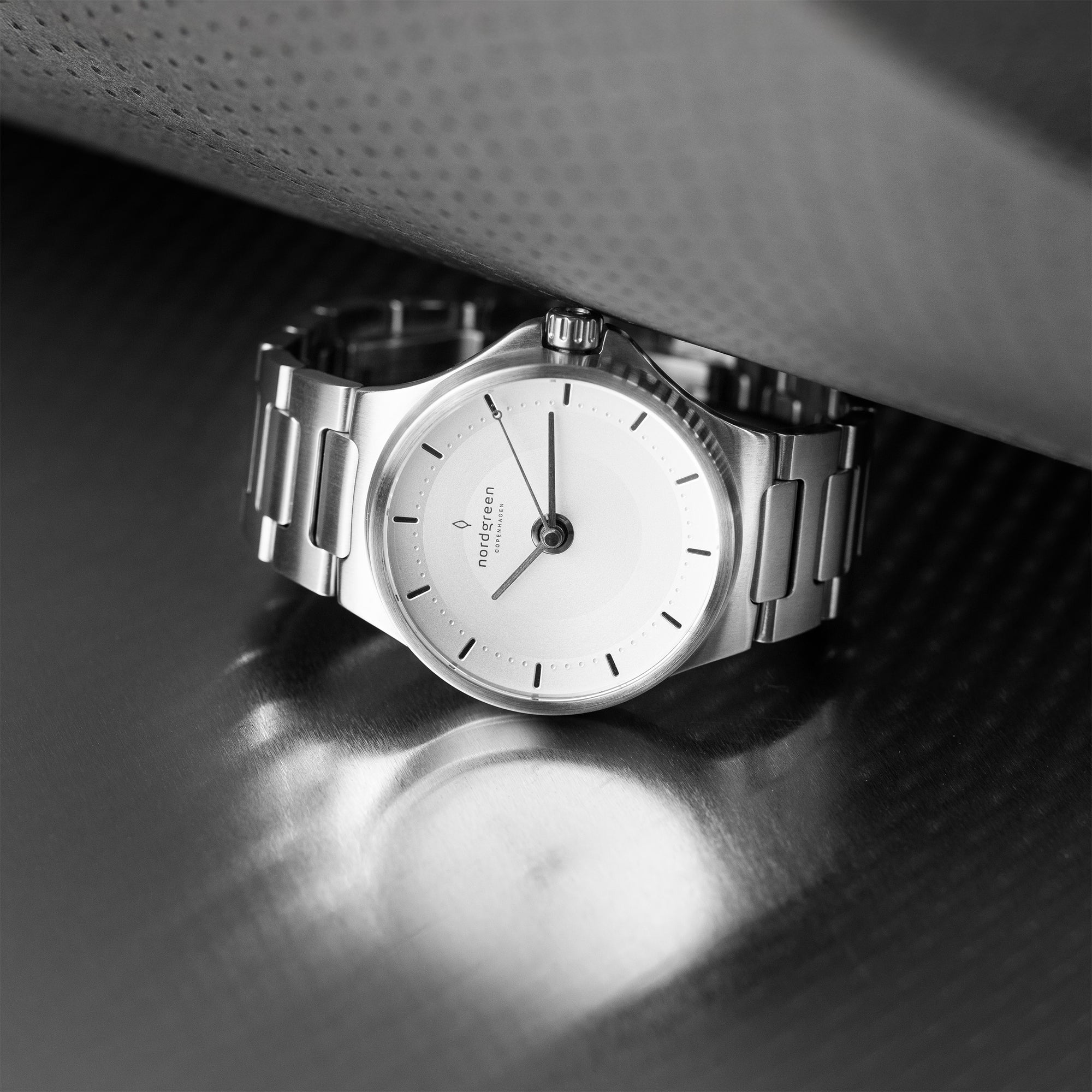The history of self-winding watches stretches back to the 18th century, when watchmakers first discovered how to turn human movement into mechanical energy. Inside each automatic watch is a small rotor that spins as you move your wrist, winding the mainspring that keeps time flowing.
What makes this type of movement so timeless is its blend of engineering and artistry. Every rotation, every click, every measured tick is the product of precision craftsmanship — a mechanism designed not for obsolescence, but endurance.
Today, choosing a self-winding watch isn’t just a style decision; it’s a statement of appreciation for time itself. It reflects a desire for balance — between tradition and technology, motion and stillness, sustainability and sophistication.
At Nordgreen, this philosophy comes to life through the Guardian Automatic Collection. Designed in Copenhagen and crafted with mindful precision, the Guardian celebrates longevity and responsibility. Its automatic movement transforms every gesture into energy, reducing waste while honoring the beauty of timeless design.
Each Guardian Automatic features sapphire crystal glass, 10 ATM water resistance, and a visible caseback that reveals the movement within — a quiet reminder that sustainability can be beautiful, and beauty can be built to last.


